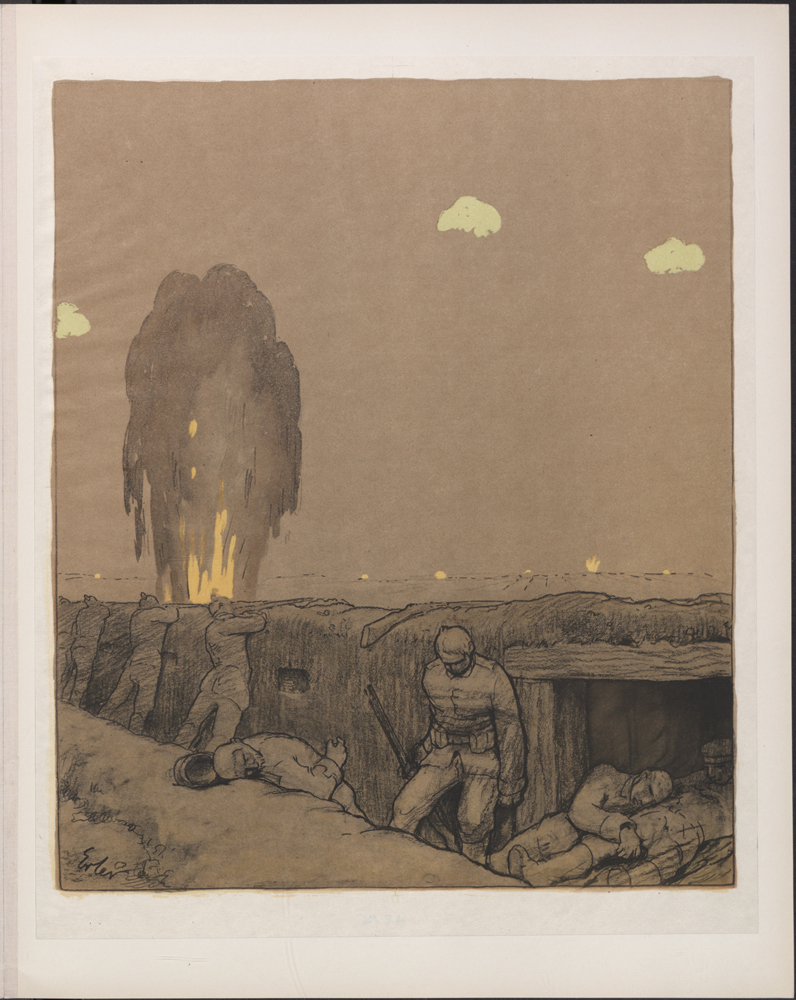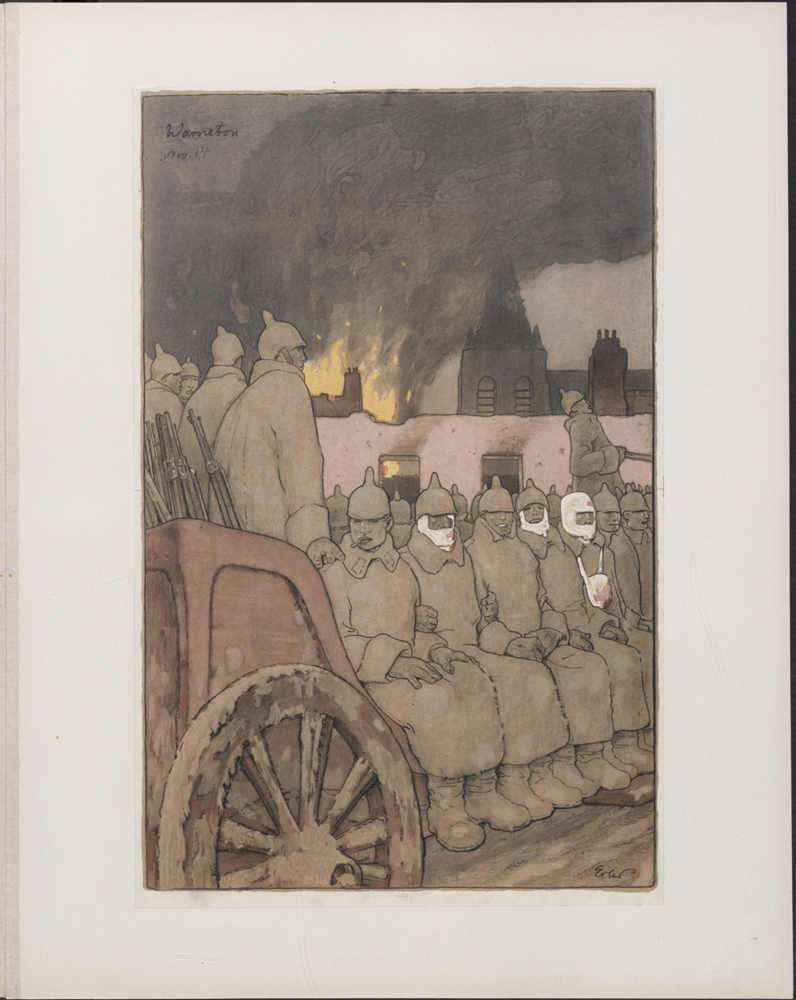
Artists behind the front – Graphics from the Great War
 One of the consequences of World War I was the appearance of institutionalized war painting: in most countries across Europe, a group of war painters operated as an official organ directed by the government.
One of the consequences of World War I was the appearance of institutionalized war painting: in most countries across Europe, a group of war painters operated as an official organ directed by the government.
In the Austro-Hungarian Monarchy, there existed a so-called Press Headquarter even before World War I. The unit served as a group of the army. In it worked journalists, photographers, film-makers and there was also a Group of Artists. Press Headquarter was responsible for the central control over public relations, i.e. for filtering and influencing news. That is why a censorship group operated within Press Headquarter.
War painters joined other members of the press and visited battlefields at times when military leadership found it appropriate, i.e. after big victories or in times of peace. An official war correspondent group operated in most of the countries; German Fritz Erler and French Lucien Hector Jonas also worked as war painters, although the latter started his war career as a private. (Works by Fritz Erler and Lucien Hector Jonas can be seen at out exhibition.)
 A great number of artists were not as fortunate as to join the group of war painters. Instead, they served as ordinary soldiers and made their works of art during military service. Out of artists to be seen at our exhibition, Mihály Biró served as an artilleryman, while István Zádor made up to the rank of company commander and it was only after his injury that he could become a war painter. Both of them survived World War I and they tried to show their own personal experience.
A great number of artists were not as fortunate as to join the group of war painters. Instead, they served as ordinary soldiers and made their works of art during military service. Out of artists to be seen at our exhibition, Mihály Biró served as an artilleryman, while István Zádor made up to the rank of company commander and it was only after his injury that he could become a war painter. Both of them survived World War I and they tried to show their own personal experience.
 Artists, who visited the actual battlefields, realized very soon that this war, unlike previous ones, simply could not be depicted. There were no more personal heroes, nor spectacular battles. The most important role was played by mass killing inventions such as cannons, airplanes and poisonous gases, and not at all by human courage.
Artists, who visited the actual battlefields, realized very soon that this war, unlike previous ones, simply could not be depicted. There were no more personal heroes, nor spectacular battles. The most important role was played by mass killing inventions such as cannons, airplanes and poisonous gases, and not at all by human courage.
The war, which could not be depicted, was easier to grasp in its details. So, painters tried to create the picture of the big whole by presenting many of the smallest moments. Important artists published their war folders, in which graphics highlighted the fragments of war experience. Reproduced graphics (mainly etching or lithography) were relatively cheap, could easily be made and, being reproduced from the original work of art, they could be distributed to a wider audience. The albums were extremely popular because people did buy them. They were really interested in battlefield events and also wanted to keep some kind of memory of the Great Times.
 National Széchényi Library did the same when, simultaneously with the outbreak of World War I, it started a large-scale international activity of collecting war art. This activity resulted in today’s rich collection, in which, in addition to the Hungarian albums, you can also find fine arts folders of both the allied nations and the enemy countries. In some of the showcases, you will find letters of donation as well. Our exhibition gives a selection of NSZL’s war albums. These works of art remind us of the horrors of World War I which started exactly one hundred years ago.
National Széchényi Library did the same when, simultaneously with the outbreak of World War I, it started a large-scale international activity of collecting war art. This activity resulted in today’s rich collection, in which, in addition to the Hungarian albums, you can also find fine arts folders of both the allied nations and the enemy countries. In some of the showcases, you will find letters of donation as well. Our exhibition gives a selection of NSZL’s war albums. These works of art remind us of the horrors of World War I which started exactly one hundred years ago.
The exhibition can be seen along the hall in front of the Archive of Posters and Small Prints, during the opening hours of National Széchényi Library. Entrance fee for visitors is HUF 400. Entrance is free for NSZL’s registered readers.



